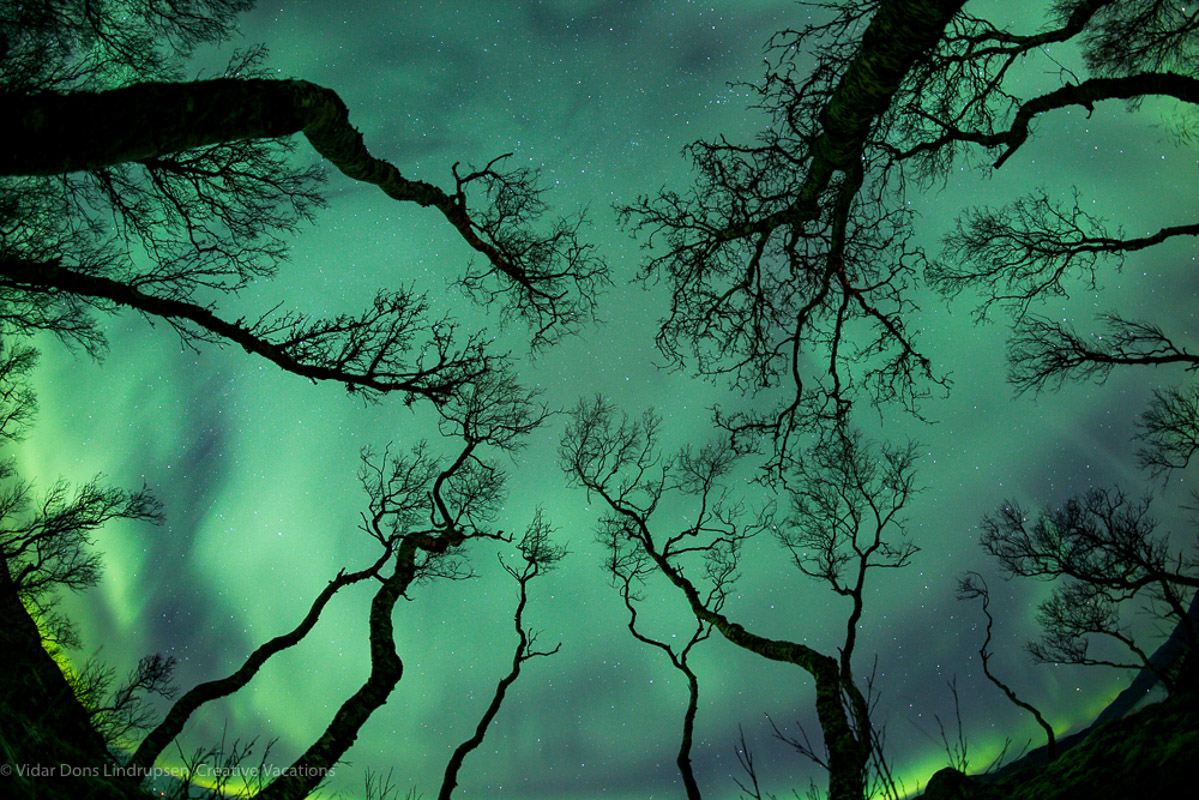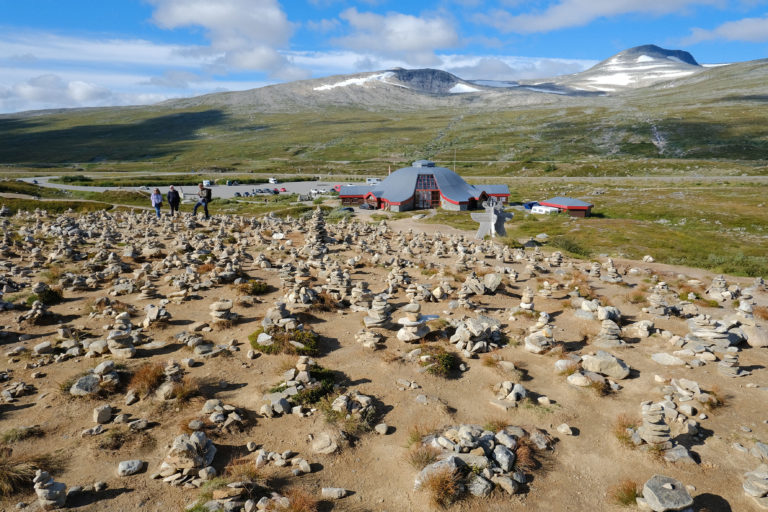“Trying to photograph the Northern Lights means pressing the camera to the very limits of what it’s designed for,” says Vidar. Kodak had originally calculated standard white balance based on the light conditions in Washington DC at 12 noon. The conditions on a winter night in Northern Norway are, naturally, radically different. Which is why it is wise to learn more about the best way of photographing this phenomenon; and Vidar and Silvia emphasise to visitors the importance of taking the photography course as early as possible in their stay. This will allow them to photograph the Northern Lights throughout the rest of their holiday; and, yes, to take successful night pictures for the rest of their lives.
A tripod is absolutely essential to take aurora photos
“There is one thing you MUST have, and that’s a stand,” says Vidar. You won’t be able to hold the camera still for long enough to take a sharp image. Otherwise it’s just a question of pressing the buttons on top of the camera, and you can learn that on the course. If you have a compact camera, this is not really the course for you. On the other hand, the many people who’ve bought a mirror reflex camera are often unaware of the all the possibilities these cameras offer, and that’s where we come in. ”
You will get help not only from a photographer but an artist
Vidar Dons Lindrupsen holds a Bachelor of Fine Art degree, majoring in photography, from Concordia University in Montreal, Canada, and can thus handle a camera. Silvia Martínez is an artist, and contributes with her eye for interesting subjects. The team find that the guests in a small group are usually on different levels of skill but, because the groups are small, there is no problem adapting the tuition to suit the individual.
Visitors from around the World come to join this course
“This will be our third winter now,” explains Silvia, “and in the past two years we’ve had guests from far-off places like Brazil, Singapore and Australia, but most are from the United Kingdom. We had originally envisaged people taking this course just once, but we’ve had several repeat visitors. One Englishman even booked another flight from London to Tromsø after a few weeks, and returned to take the course again. Our typical guests are well-travelled and experienced tourists who know what they want. ”
After some theory the aurora chase begins
The course plan is simple; they pick up the participants in the town centre, and drive out to Håkøya half-an-hour west of the town. Then they all sit round the table in Silvia and Vidar’s home and take the theoretical part of the course. Naturally, a little dinner also has to form part of the proceedings, as Tromsø’s best fish shop is right around the corner! Then everyone drives out to try their new knowledge. Beautiful places close by, such as Ersfjorden and Grøtfjorden, are the first choice, but in more difficult weather conditions the radius of action is slightly increased.
Lady Aurora won’t always appear, but you will still have an experience to remember
How do people react when the Northern Lights appear? “Well,” says Vidar, “people differ. Some concentrate intensely on taking the best pictures, while others clap their hands and shout for joy. ” And what if the Northern Lights fail to appear – surely they’re grumpy and disappointed? “No, far from it,” says Silvia, “people are glad for everything they’ve learned. They naturally understand that we can’t guarantee that the Northern Lights will appear. ” “We’ve even offered to cancel the trip without charge on difficult evenings,” says Vidar, “but they still want to go out. Ironically, it’s under such conditions that we tend to see the Northern Lights, so I’ve learned at least never to say never. ”












